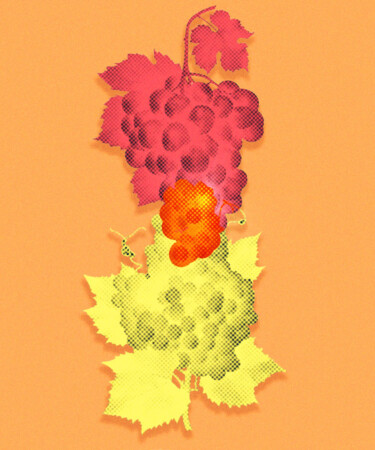If you come across the term “co-ferment” on a wine label, it can be difficult to know what exactly that bottle has in store for you. That’s because the word can be used to describe anything made by fermenting more than one substrate together, whether that be a more traditional wine crafted by fermenting different grape varieties together or a more experimental fruit wine made with a combination of grapes and apples or blueberries.
While both of these categories are seeing a boost in popularity as producers continue to push the boundaries of what can be considered wine, there has been a definitive surge of producers co-fermenting red and white grapes together to make delightfully light and fruit-forward wines. So what exactly makes these wines so special, and why are we seeing more of them on the market today? VinePair spoke with Evan Lewandowski, winemaker for California-based Ruth Lewandowski wines, to shed some light on the trend.
What qualifies as a co-ferment?
When it comes to pinpointing what a co-ferment is exactly, Lewandowski admits that defining the category can be tough.
“There is no real standard for labeling a wine as a co-ferment,” he says. “It might just be semantics.” In general, the term can apply to just about any wine composed of two things that were fermented together. In wine, Lewandowski finds that the most important factor to consider is that a co-ferment is entirely distinct from a blend.
“In a blend, you are simply combining completed wines post-fermentation,” explains Lewandowski. “For wines to legitimately be a co-ferment, the different grape varieties have to be fermented together at the same time. This leads to drastically different results than your regular, everyday blend.”
For these wines, Lewandowski subscribes to one overarching ethos: “The whole is greater than the sum of its parts.” Meaning that if you took two grapes — Arneis and Dolcetto, for example — fermented them separately, and blended them, you would be able to identify the innate characteristics of both Arneis and Dolcetto in the final wine. But if the grapes are fermented together, the entire chemistry of the fermentation shifts, making a final product that contains properties that neither wine would have been able to achieve on its own.
“The co-ferment has more opportunity to knit together and let the different varieties become more integrated,” says Lewandowski. “You might not even be able to pick out certain components of each grape; it feels more like a ‘one’ thing. That can’t be replicated with blending.”
What grapes work well together in a co-ferment?
Unlike a blend, for which you can sample endless combinations before bottling, a winemaker only gets one shot in deciding what grapes end up in a given co-ferment, and in what proportions. After crafting co-ferments from the same vineyards for over a decade, Lewandowski has learned a lot about what works and how to adjust to make a complete final wine.
Ruth Lewandowski winery’s co-ferments include Boaz, a combination of entirely red grapes including Carignan, Grenache, and Cabernet Sauvignon, and Feints, a co-ferment of red and white grapes from Northern Italy including Dolcetto, Barbera, Nebbiolo, and Arneis. Lewandowski’s goal with Feints was to make an extremely light and drinkable red, and he says its ideal composition vacillates between 35 and 50 percent white grapes depending on what other varieties he’s working with.
“When you are dealing with dark, structured reds, there should be more white to freshen things up and keep it light and lively,” he explains. If the blend has more Dolcetto, which is a deep and tannic variety, Lewandowski will add more white grapes to give the wine an aromatic lift. He will also add more acidic red grapes like Barbera to balance out Dolcetto’s lack of acidity. Over time, Lewandowski has found, roughly 40 percent Arneis is the sweet spot to keep things fresh and high-toned, but still offer some characteristics from the reds like tannin, acid, and color. So while any combination of grapes can be used in a co-ferment, it is important for producers to keep balance in mind.
Why are these wines so popular now?
Co-fermenting red and white grapes is a technique that has been used for centuries, most notably in the Côte Rôtie appellation of the Northern Rhône. There, small quantities of Viognier are fermented with Syrah, adding the signature aromatic lift to these highly sought-after wines. What used to be a niche tradition is now a method embraced by producers around the world. Some are making wines inspired by the legendary bottles of Côte Rôtie, including Santa Barbara’s Stolpman Vineyards, which makes its Crunchy Rôastie bottling as a carbonic co-ferment of Syrah and Viognier.
Lewandowski credits his interest in the technique to a love for lighter-bodied reds like Schiava, which he would enjoy chilled while working at a winery in Italy’s Alto Adige region. In an attempt to replicate this juicy, quaffable profile stateside, Lewandowski “threw everything at it” to create the wine that would eventually become Feints. He co-fermented red and white grapes together and employed carbonic maceration to ensure the primary fruit and freshness shined through. Released in 2013, this wine was one of the first of its kind in the U.S. Lewandowski appropriately named the bottle for a term that references an unexpected move from your opponent in fencing. This crushable wine was an instant hit, and as the chillable reds trend started to take hold of the market, many producers began crafting similar bottlings — each coming up with new and interesting combinations of grapes to co-ferment.
Even though these bottles defy most of wine’s typical categories — living somewhere on the spectrum between red, rosé, and orange — co-fermented wines are often categorized as chillable reds. They typically still appear red in color, but have a lighter body and intense aromatics from the white grapes. You can even check out some stellar co-ferments like the Scar of the Sea Pinot Gris and Pinot Noir, Early Mountain Vineyards Chambourcin and Vidal Blanc, and Corey Creek Cabernet Franc and Viognier on our guide to the best chillable reds for 2023.
“I feel like everyone’s kind of giving it a go,” Lewandowski says. “Once you step outside a certain box of categorization, your brain kind of explodes with options and opportunities.” So as producers continue to experiment with new grape combinations and styles, expect to see more quaffable co-ferments hit the shelves. Here are five co-ferments to try.
Ruth Lewandowski Feints Carbonic Co-ferment 2022
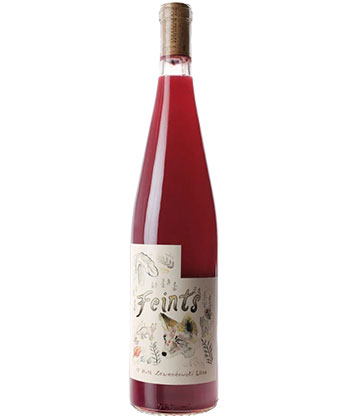
A love letter to Northern Italy, this co-ferment has it all. Arneis, Dolcetto, Barbera, and Nebbiolo, and small amounts of Montepulciano, Vermentino, Trebbiano, and even Grignolino are fermented together with carbonic maceration to pump up the wine’s fresh, fruity notes. This wine almost goes down too easy, with juicy, fruit-forward flavors perfectly lifted by bright acid. Chill this one down, bring it to your next pizza night, and watch as your friends sip in awe.
Price: $27
Buy This Wine
Florez Wines Lovebirds 2022
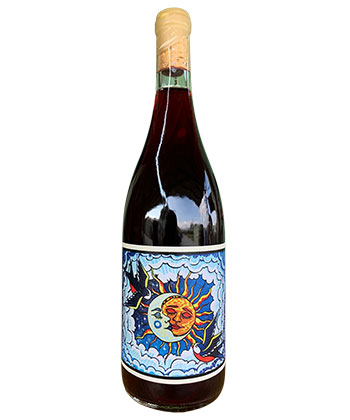
Often grown in close proximity, one could argue that Chardonnay and Pinot Noir are indeed lovebirds, and that’s beautifully demonstrated in this co-ferment of the two. Though this bottle is a 50/50 split of both grapes, you’ll be hard pressed to find any familiar characteristics of either here, as they’ve come together to create something completely different. The color is a stunning deep pink, and the palate offers concentrated raspberry jam and zippy grapefruit flavors. For these reasons, we stan Pinot Noir and Chardonnay as a co-ferment couple.
Price: $30
Buy This Wine
Le Sot de l’Ange Malolactix 2020
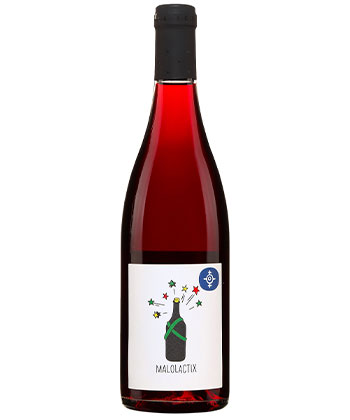
This bottle is a little mind-bending, as it’s both a co-ferment and a blend. Pinot Noir and Chardonnay from Limoux are co-fermented, and Gamay and Cabernet Franc from Le Sot de L’Ange’s estate in Touraine are also fermented together. These two co-ferments are then blended together to make the ultimate glou-glou wine. The tannins here are barely noticeable, and most of what you pick up is concentrated strawberry and blackberry flavors with refreshing acid.
Price: $31
Buy This Wine
Broc Cellars AYAY! 2022
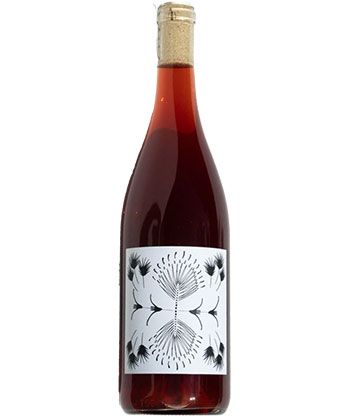
Inspired by an Italian pop song, this lively wine is a field blend-style co-ferment of 80 percent Montepulciano and 20 percent Trebbiano from Mendocino County’s organically farmed Fox Hill Vineyard. The resulting juice has an incredibly tart profile with notes of cranberry, pomegranate, just-ripe cherries, and orange zest. At just 11 percent alcohol, this is a great candidate for all-day sipping.
Price: $32
Buy This Wine
Les Vins Pirouettes Ultra Violet de David 2021
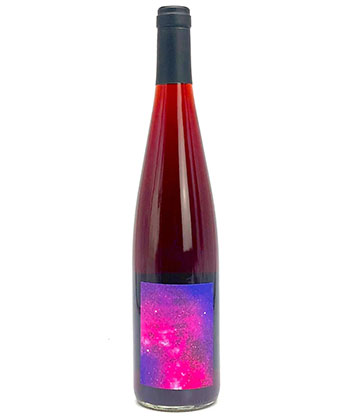
Les Vins Pirouettes is a collective of Alsatian winemakers helmed by pioneering producer Christian Binner, and this Ultra Violet bottling comes from winemaker David Muller Koeberlé. This fun and energetic wine is a co-ferment of local Alsatian grapes including Pinot Noir, Pinot Blanc, Auxerrois, Riesling, Gewürztraminer, and Muscat that undergo maceration as whole bunches for five days. The Pinot Noir’s red berry flavors and floral aromatics from the white grapes come together to make an ultra-drinkable wine full of character. Can’t decide between an orange wine or a rosé? This combo is the winner.
Price: $35
Buy This Wine
